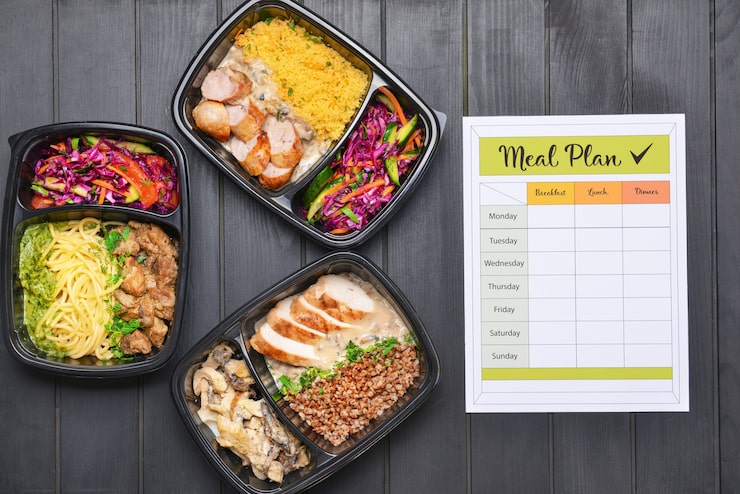Navigating university or college life in Canada comes with its own set of challenges, and managing your finances is a big one. Between tuition, books, and rent, the cost of food can quickly add up, leaving your bank account looking a little lean. Learning how to stretch your dollars is a vital skill. With a smart approach, you can eat well without breaking the bank. This guide offers practical food budgeting tips for students in Canada to help you save money while still enjoying delicious and nutritious meals.
Why Food Budgeting Matters for Students
When you’re juggling classes, assignments, and a social life, thinking about your food expenses might seem like another chore. However, creating a food budget is one of the most effective ways to control your spending. The average Canadian household spends a significant portion of its income on food, and for students on a tight budget, this can be a major source of financial stress.
Without a plan, it’s easy to overspend on takeout, convenience foods, and impulse buys. These small purchases add up over time. By tracking your spending and planning your meals, you gain control over your finances. This not only frees up money for other essentials but also reduces stress, allowing you to focus more on your studies. A solid budget is the foundation for financial wellness during your student years and beyond.
Building Your Student Food Budget
Getting started with a budget doesn’t have to be complicated. The goal is to understand where your money is going so you can make informed decisions.
1. Track Your Spending
For one month, keep a record of every dollar you spend on food. This includes coffee runs, late-night pizza, and vending machine snacks. Use a notebook or a simple spreadsheet. At the end of the month, categorize your spending. You might be surprised to see how much you’re spending on non-essential items. This is the first step in identifying areas where you can cut back.
2. Set a Realistic Weekly Goal
Once you know your average spending, set a realistic weekly food budget. It should be an amount that is challenging but achievable. If you currently spend $150 a week, aiming for $100 is a good starting point. Remember to be flexible. Some weeks you might spend a little more, and others a little less. The key is to have a target to guide your purchasing decisions. This is one of the most effective food budgeting tips for students in Canada.
3. Plan Your Meals
Meal planning is a game-changer for saving money. Before you head out to shop, decide what you’ll eat for breakfast, lunch, and dinner for the week. This prevents impulse buys and ensures you only purchase what you need. Look for recipes that share common ingredients to minimize waste. For example, if you buy spinach, you can use it in a smoothie, a salad, and a pasta dish. These meal planning tips for students can dramatically reduce your food spending and the stress of figuring out what to eat every day.
Smart Food Budgeting Strategies for Canadian Students
Managing your food costs can be tricky, but going in with a plan will help you stick to your budget and make healthier choices.
Don’t Shop Hungry
This is a classic piece of advice for a reason. Shopping on an empty stomach makes everything look appealing, leading to a cart full of snacks and unplanned purchases. Eat a small meal or snack before you shop to keep your decision-making sharp.
Explore Affordable Food Options
Canada has several affordable food chains and markets that offer good deals. Local ethnic food stores often have great prices on produce, spices, and grains. Exploring these options can lead to significant savings compared to premium retailers.
Buy in Bulk (When It Makes Sense)
Buying non-perishable items like rice, pasta, oats, and canned goods in bulk can save you money in the long run. However, be cautious with perishable items. It’s not a deal if you end up throwing half of it away. Only buy what you are confident you will use before it spoils.
Cooking and Kitchen Tips to Save More
How you cook and manage your kitchen is just as important as how you plan your food budget. These tips for Canadian students will help you make the most of your ingredients.
Cook at Home: Eating out is one of the fastest ways to drain your budget. Preparing meals at home is significantly cheaper and often healthier.
Embrace Leftovers: Cook in larger batches so you have leftovers for lunch the next day.
Use Your Freezer: Freeze leftovers and extra food portions before they spoil. This reduces food waste and maximizes your budget.
Finding Discounts Beyond the Kitchen
While cooking at home is key, everyone enjoys a meal out now and then. When you do, make sure you’re getting the best deal possible. Many restaurants near universities and colleges offer student discounts. Always ask if they have a deal and keep your student ID handy.
Apps are also emerging to make student life more affordable. For example, stuDelicious connects students with local restaurants, offering meal plans and deals tailored to a student’s budget and lifestyle. Leveraging such platforms is one of the smartest food budgeting tips for students in Canada.
Final Thoughts
By combining smart shopping, meal planning, and strategic dining out, you can master your food budget and enjoy a delicious, stress-free student experience. Implementing these food budgeting tips for students in Canada will set you up for financial success long after graduation.





